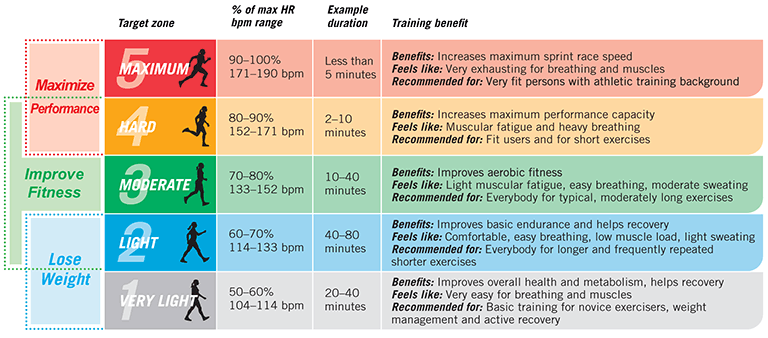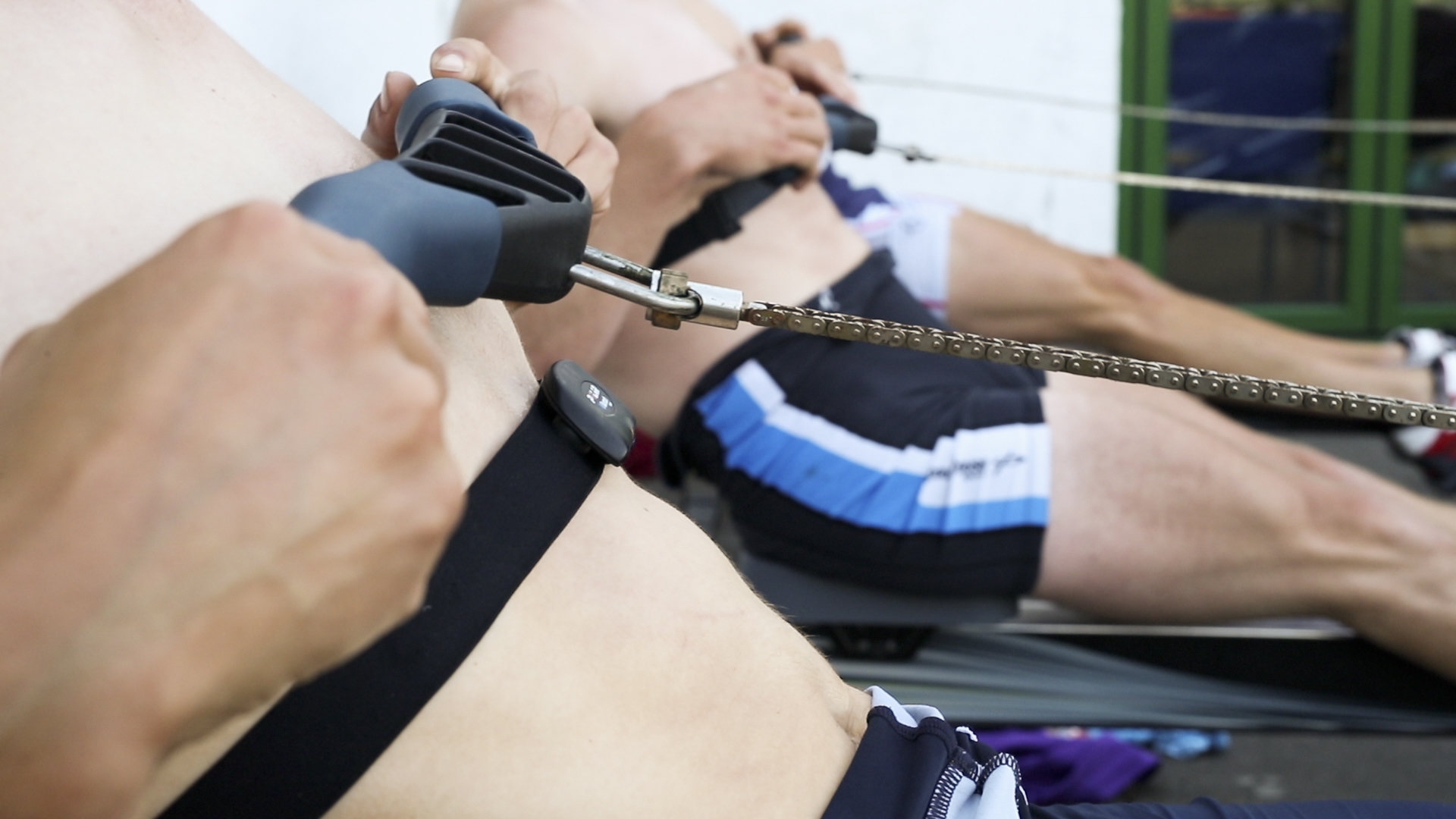Considerations in training and training programmes to ensure a athlete maintains a healthy heart is essential.
In this blog we look at healthy heart rate zone training, safe vs dangerous heart rates and why reduced activity can have strong benefits to an athlete.
Athlete Heart Rate Zones
Heart rate, VO2 Max, power (in watts), and blood lactate are all methods that endurance athletes use for training. Heart rate training may be the most commonly used method across all demographics and populations. Its convenience, accessibility, and repeatability make it an asset for the time strapped endurance athlete. Heart rate zone training is a very individualized training method because it is based off of your personal maximum heart rate. This allows the individual to accurately train at specific intensities. The convenience makes it particularly useful for junior, para, recreational and masters athletes who may not have access to a physiological laboratory where VO2 Max and blood lactate testing can be done to determine your maximum heart rate and heart rate training zones.
What is heart rate zone training?
Heart rate zone training involves determining your maximum heart rate and setting your heart rate zones based off of a percentage of your maximum heart rate. There are five zones of training. These heart rate zones cover both aerobic and anaerobic intensities. Endurance athletes want to spend the majority of their time training in the aerobic heart rate zones but training intensity must be distributed across all five zones. (Please see image below).

Let’s define a few key terms and how to determine you can determine yours.
Maximum heart rate is the highest number of beats per minute an individual can achieve in an all out physical exertion. Resting heart rate is the number of heartbeats per minute while at rest.
Resting heart rate is determined by taking your pulse. The most accurate way to do this is directly after waking up in the morning while you are still in bed (5). You can wear a heart rate monitor strap and record that number. The second option available to you is to manually take your pulse. First, locate your pulse on your radial artery. Place your index finger and middle finger on your opposite wrist directly below the pad of your palm, where the wristband of your watch resides. Count the number of heartbeats for 10 seconds and multiply this number by 6. This will give you the number of heartbeats for one minute and is your resting heart rate.
Maximum heart rate can also be determined through a field test. Here are two options based on running and rowing. Before you begin either option make sure that you do easy training for two days prior to the test, get quality sleep each night, are well hydrated, and conduct a proper warm-up.
Endurance coach Andrejs Birjukovs recommends doing 4 x 2 minute repeats with 1’ of rest in between to determine your maximum heart rate (1). For this test you are focusing on maximum speed during each interval. The short rest will not allow you to fully recover and by the third set your heart rate will probably reach its maximum. You will be able to accurately tell your maximum heart rate by reviewing your heart rate monitor data. When the heartbeats per minute does not climb any higher and stays consistently elevated within 1-2 beats per minute this is your maximum heart rate. Take note of the highest value and record it.
The second option is a 7 x 4 minute step that Rowing Australia implements. This option requires you to know your 2000-meter personal best time within the last 12 months. It is recommended no training takes place for a minimum of at least 12 hours before this test. This test is typically carried out in a lab setting but you can do this on your own and use a heart rate monitor strap that connects to the Concept II Ergometer Monitor to collect all of your data. This test is significantly longer and will take a total of 29 minutes. The first six steps are completed continuously and there is a 1’ passive break (no rowing!) between steps six and seven.
Please read full details on preparation, set-up, and execution of the 7 x 4 here (7).
A high resting heart rate may be a red flag for health issues. Harvard Health Publishing found in a 2009 study that examined the relationship between heart attacks and resting heart rate in 129,135 post menopausal women. The eight year study found that women with a resting heart rate of 76 beats per minute or higher were 26% more likely to have a heart attack in comparison to women with the lowest resting heart rate of 62 beats per minute (5).
An Athlete’s Heart Rates
Endurance athletes’ hearts undergo changes due to long-term training. The heart grows in size and the ability for it to pump blood throughout the body becomes more efficient producing a lower resting heart rate. This increase in fitness also is represented in training; athletes must include higher intensity sessions to elevate their heart rate up to zones four and five for example. On the low intensity end of the spectrum they can hold a low heart rate for a longer duration of time. This improves the aerobic capacity of the athlete and lowers their resting heart rate.
What is an athlete’s ideal resting heart rate?
Athletes will have lower resting heart rates than the general population. It is not uncommon to see resting heart rates between 30-40 beats per minute. Cardiovascular training has a profound effect on increasing heart size and lowering the resting heart rate. Additional factors that can affect your resting heart rate include age, fitness level, amount of physical activity, air temperature (on hot or humid days, heart rate may increase), emotional state, and medication (2). There is no “ideal” resting heart rate. A lower resting heart rate can indicate improved fitness levels as detailed.
The activity or sport you do also has a direct effect on the potential maximum heart rate of that athletic population. In a 2007 study, Faff et al. had 589 males and 1180 females ages 13-32 tested for maximum heart rate. Testing was completed on a treadmill (running), rowing ergometer (rowing), cycling ergometer (cycling), ski ergometer (skiiing), and kayak ergometer (kayaking). Faff et al. found that rowers and runners had the highest maximum heart rates of all sports tested (3). The sports that utilize the greatest skeletal muscle across the body are producing the highest heart rates.
How to lower your heart rate
A lower resting heart rate will occur as your fitness level increases. Additional factors that contribute to a lower resting heart rate include hydration, nutrition, age, and gender. These lifestyle factors outside of training will impact the progress you make, your fitness level, and ability to lower your heart rate. Evaluate your sleep to make sure you are getting 8 hours or more per night. Read our blog for more information on strategies to improve your sleep and performance. In addition, make sure you are getting enough hydration to support your activity levels and properly fuelling your body with the appropriate macronutrient count. Limiting caffeine and alcohol intake can also contribute to lowering your heart rate. Consult a registered dietitian for more information. All of these factors will help you lower your heart rate.
What is a dangerous heart rate?
Endurance athletes will have lower resting heart rates than the general population. This isn’t a bad thing at all. High heart rates accompanied by dizziness, fainting, or illness should be taken seriously and you should consult with a medical professional.
A heart condition endurance athletes should understand is Bradycardia. Bradycardia is a heart rate that is too slow (4). This is exhibited by the following symptoms: fatigue or feeling weak, dizziness or light-headedness confusion, fainting (or near-fainting) spells, shortness of breath, difficulty when exercising, and cardiac arrest (in extreme cases). Bradycardia is caused by any of the following (4):
- Problems with the sinoatrial (SA) node, sometimes called the heart’s natural pacemaker
- Problems in the conduction pathways of the heart that don’t allow electrical impulses to pass properly from the atria to the ventricles
- Metabolic problems such as hypothyroidism (low thyroid hormone)
- Damage to the heart from heart disease or heart attack
- Certain heart medications that can cause bradycardia as a side effect
Bradycardia should be treated by a medical professional depending on the frequency and severity of it.
Athletic heart syndrome
Athletic heart syndrome or the athlete’s heart occurs due to chronic long term exposure to training. The heart adapts to this training load and as a result it becomes more efficient at circulating blood throughout the body. The left and right ventricles and left atrium hypertrophy in size. A greater volume of blood can be pumped from the heart throughout the body. The side effect is a lower resting and training heart rate over time.
Symptoms of athletic heart syndrome are bradycardia, an extra heart sound, and heart murmur. These must be detected by a medical professional and then additional testing must be conducted with either an Electrocardiogram, Echocardiogram, or Stress Test to determine if you have athletic heart syndrome or another cardiovascular condition (6).
Athletes must enter a period of detraining and decrease their exercise levels to allow their heart to adapt to a reduction in overall training volume and intensity.
Conclusion
Endurance training provides a host of health benefits to your mind and body. It reduces stress, increases fitness, lowers your resting heart rate, and improves your ability to pump blood throughout your body allowing you to train longer and more intensely. Long term effects of cardiovascular training lead to athletic heart syndrome, an enlarged heart. Endurance athletes must continue to include some activity at reduced levels throughout the rest of their lives to account for years and years of chronic high volume training.
References
[1] Birjukovs, Andrejs. (2020) 3 Ways to calculate maximum heart rate and why it’s needed. The Athlete Blog. Website. Accessed January 2021.
[2] Chertoff, J. (2020) Why do athletes have a lower resting heart rate? Healthline Website. Accessed January 2021.
[3] Faff, J., Sitkowski, D., Ladyga, M., Klusiewicsz, A., Borkowski, L., Starczewska-Czapowska J. (2007) Maximal heart rate in heart rate athletes. Biology of Sport, 24(2)
[4] Bradycardia: Slow heart rate. Heart.org Website. Accessed January 2021.
[5] High resting heart rate predicts heart risk in women at midlife. Harvard Health Publishing Website. Written May 2009, Updated January 29, 2020. Accessed January 2021.
[6] Israel, Dr. M., Athlete’s heart. American Medical Society for Sports Medicine Website. Accessed January 2021.
[7] Rice, T. (2016) 7 x 4 minute step test protocol. Rowing Australia Website. Accessed January 2021.
View more content like this

Wingfield Sculls Special | Mathilda Hodgkins-Byrne and Sam Meijer in Crossy's Corner
The Wingfield Sculls first started in 1830 and is one of the top single sculling races in the British Rowing calendar. Mathilda Hodgkins-Byrne and Sam
From Olympic Rowing Training to Battling Coronavirus | Crossy's Corner with Olivia Coffey
The Wingfield Sculls first started in 1830 and is one of the top single sculling races in the British Rowing calendar. Mathilda Hodgkins-Byrne and Sam
Benefits of Athlete Monitoring
So much time and effort goes into training. Very often that all goes to waste because not enough attention is placed on monitoring both the





